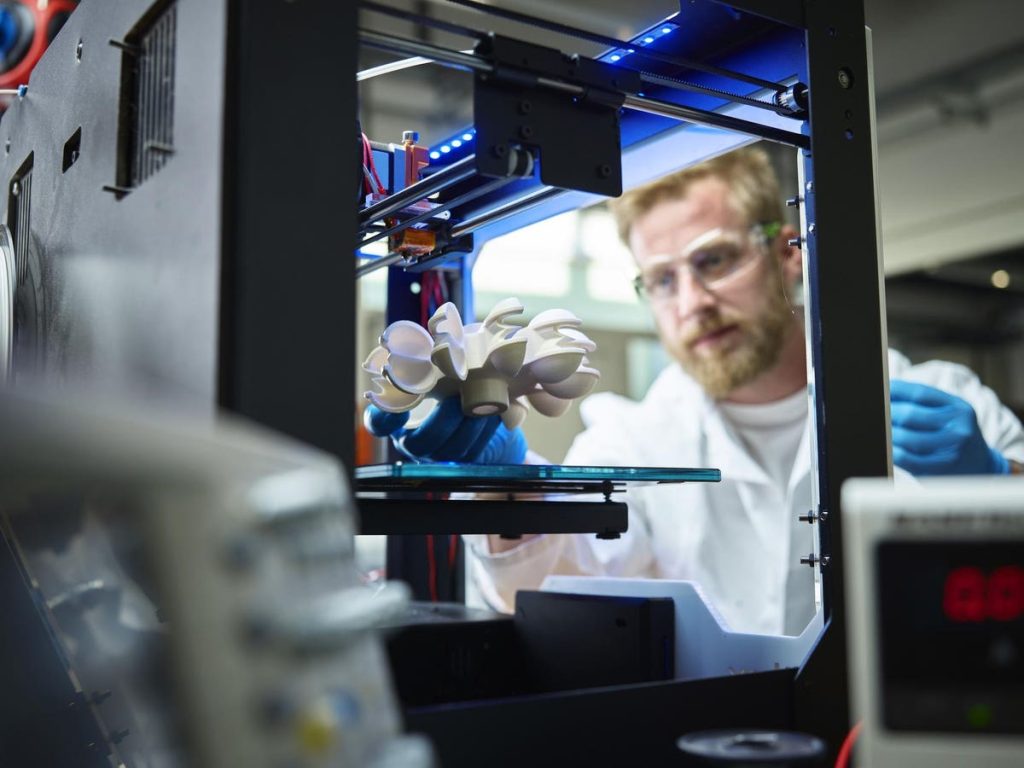Sometimes when an innovative technology is introduced, its potential impact isn’t initially recognized. Take 3-D printing, which has been around since the 1980s. It was originally dismissed as a niche technology with limited usefulness—perhaps the occasional custom design or art piece. However, as 3-D technology has evolved and become more affordable, industries and government agencies have pioneered a variety of new and impactful applications.
From more efficient, “greener” manufacturing to the support of life-altering (and life-saving) care, 3-D printing is finding a host of new uses across industries and public services. Below, 12 members of Forbes Technology Council discuss a few of the innovative industrial applications of 3-D printing that have already seen success.
1. In-The-Field Replacement Parts
The aerospace and defense industry, among others, faces massive challenges in decreasing the time it takes to deploy systems. In the past, the military would have to wait months to receive mission-critical replacement parts from manufacturers. Today, 3-D printing can produce spare drone parts in the field or help pilots familiarize themselves with new cockpit layouts in a matter of days. – Tim Reed, Lynx Software Technologies
2. New And Innovative Materials
3-D printing encourages the exploration and development of new materials that are better suited for specific aerospace applications. This can lead to enhanced durability, temperature resistance and other properties critical for aerospace engineering. – Manan Shah, Avalance Global Solutions
Forbes Technology Council is an invitation-only community for world-class CIOs, CTOs and technology executives. Do I qualify?
3. Foods
3-D printing of food allows for unprecedented precision in creating palatable, personalized nutrition. The ingredients can be freeze-dried, powdered and upcycled, which enables better logistics and supports sustainable food production. – Viktor Trón, Swarm
4. Complex Metal Parts
3-D printing made its debut in creating low-cost, rapid prototypes. The rise of new materials and faster printers has made it a viable production method at small to medium quantities. 3-D printing opens unlimited customization capabilities and does not require expensive tooling. It can be used for the manufacture of complex metal parts for automotive, construction and industrial machinery, which makes a huge impact on productivity. – Alex Gudilko, AJProTech LLC
5. High-Performance Aerospace Parts
3-D printing has made significant strides in the aerospace industry, enabling the creation of complex, high-performance parts such as fuel nozzles, turbine blades and landing-gear components. This technology reduces material waste and costs and accelerates the prototyping and testing process. Advancements in 3-D printing could revolutionize manufacturing, supply chains and design across industries. – Amitkumar Shrivastava, Fujitsu
6. Patient-Specific Anatomical Models
In the realm of surgical preparation, 3-D printing is making waves. Medical professionals can now create 3-D models of patients’ anatomy to better plan complex procedures. This advance can revolutionize surgery by making it more precise, reducing risks and potentially improving recovery times, thereby ushering in a new era of personalized healthcare. – Marc Fischer, Dogtown Media LLC
7. Medical And Dental Implants And Prosthetics
3-D printing absolutely can, and already is, revolutionizing the field of patient care. It’s now possible to create highly personalized and complex medical and dental implants and prosthetics. For the first time, surgeons can design and print patient-specific (that is, tailored to the individual’s anatomy) implants—everything from dental crowns to hip and knee replacements—with micron-level precision. – Dr. Venu Murthy, venumurthy.com
8. Custom Car Parts
In the automotive industry, 3-D printing has been used to create custom car parts. This potentially can both reduce the need to maintain a large parts inventory and speed up the production process. It might also revolutionize the industry by allowing more personalized options. – Margarita Simonova, ILoveMyQA
9. Houses And Building Components
The creation of 3-D-printed houses and building components revolutionizes construction by significantly reducing construction time, costs and material waste. Embracing 3-D printing in construction and real estate has the potential to reshape the industry, making it more efficient, environmentally friendly and accessible to a wider population. – Johan Nilsson, Convolo
10. Disaster Relief Supplies
3-D printing has already proven to be a game-changer in disaster relief scenarios. During emergencies, 3-D printers can produce critical supplies including medical equipment, temporary shelters and even food. This on-site production capability can revolutionize disaster response efforts, enabling rapid and customized aid delivery to affected areas, potentially saving lives and minimizing suffering. – Jagadish Gokavarapu, Wissen Infotech
11. Wearable Fashion
The fashion industry has begun to harness the potential of 3-D printing, creating intricate and unique wearable designs that are impossible with traditional methods. This breakthrough allows for customization at unprecedented levels, potentially transforming fashion into a more personalized and sustainable industry. – Andres Zunino, ZirconTech
12. Household Appliance Replacement Parts
One of the most exciting innovations in 3-D printing is the ability to get replacement parts for machines around the house. For instance, Whirlpool has leveraged 3-D printing to extend the average lifetime value of its appliances for customers. I believe many residential appliance companies will take this route as 3-D printing becomes more mainstream. – Thomas Griffin, OptinMonster
Read the full article here









